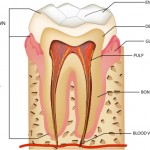
When vital painless pulps are exposed direct pulp capping is used as an alternative to root canal treatment. Exposure may be traumatic or as a result of caries removal, which may affect the outcome as, may the choice of capping material. Calcium hydroxide (CH) is conventionally used although a range of material have been employed and a number of studies have suggested that mineral trioxide aggregate (MTA) may be more effective.
The aim of this review was to systematically assess randomised controlled studies (RCTs) comparing different materials for direct capping of exposed pulps in both primary and permanent teeth
Methods
Searches were conducted in the PubMed, Embase, Cochrane Central Register of Controlled Trials and Opengrey databases. RCTs conducted in adults or children (permanent and primary teeth) with traumatic or carious pulp exposures in teeth with vital (sensible) pulps without signs of irreversible inflammation (i.e., no or only short-term sensitivity or pain) with exposures treated with two different materials allocated at random or quasi-randomised were considered.
Two reviewers independently selected studies for inclusion and abstracted data. Risk of bias was assessed following Cochrane guidelines. Dichotomous data were used to calculate effect estimates, with the capped pulp as unit of analysis. Meta-analysis was conducted. Trial sequential analysis was used to assess risk of random errors. Strength of evidence was graded using the GRADE approach.
Results
- 11 studies involving a total of 1196 teeth in 922 patients were included
- 6 were conducted in children the rest in adults.
- Mean follow-up was 14 months (range 3–24)
- Most studies used calcium hydroxide as control, comparing it to mineral trioxide aggregate (MTA) (three studies), bonding without prior etching/conditioning (two), or bonding with prior etching/conditioning, enamel matrix proteins, resin-modified glass ionomer cement, calcium sulfate, zinc oxide eugenol, corticosteroids, antibiotics, or formocresol (each in only one study). One study compared MTA and calcium-enriched cement.
- In permanent teeth, risk of failure was significantly decreased if MTA instead of calcium hydroxide was used. Risk ratio (RR) = 0.59 ( 95%CI; 0.39 – 90 )
- No difference was found for primary teeth.
- Other comparisons did not find significant differences or were supported by only one study.
- No firm evidence was reached according to trial sequential analysis.
Conclusions
The authors concluded:-
the use of different materials for pulp capping is supported by only a number of controlled trials. Within the limitations of this review, most materials did not show superiority compared with the standard of care, CH. While MTA might be a valuable alternative to CH for direct pulp caps, no firm evidence was reached to strongly support any recommendations. Moreover, this finding applies to permanent, but not primary teeth, where no advantage of MTA was found. Given that direct capping is a frequently per- formed procedure in general practice, more long-term controlled, practice-based studies with real-life (carious) exposures are required to ascertain which material is most suitable. Based on our findings and considering results from non- controlled trials, dentists can but do not need to use MTA instead of CH for direct capping in permanent teeth.
Comments
This review included 3 more studies in primary teeth than the most recent Cochrane review on pulp treatment for primary molars published in 2014 (other references). While well conducted that review authors highlight that a majority of the studies in adult teeth were conducted in artificially exposed teeth, which may not replicated clinical circumstances. The included studies themselves were all at high risk of bias and in the main included small numbers of patients. A previous meta-analysis of direct pulp capping in permanent teeth published in 2015 by Li et al suggested that MTA had better success rates however that review included non-randomised studies.
Links
Primary paper
Schwendicke F, Brouwer F, Schwendicke A, Paris S. Different materials for direct pulp capping: systematic review and meta-analysis and trial sequential analysis. Clin Oral Investig. 2016 Apr 2. [Epub ahead of print] Review. PubMed PMID: 27037567.
Other references
Original review protocol on PROSPERO
Direct pulp capping in permanent teeth more successful with MTA

Pulp capping in primary and permanent teeth-limited high quality studies https://t.co/5uh2TDdC5D
Limited evidence for specific material for pulp capping
https://t.co/5uh2TDdC5D
Which pulp capping material? https://t.co/5uh2TDdC5D
Limited evidence for which pulp capping material https://t.co/5uh2TDdC5D
Don’t miss- Pulp capping in primary and permanent teeth-limited high quality studies https://t.co/5uh2TDdC5D
@TheDentalElf no change and …..more research required.. so no change